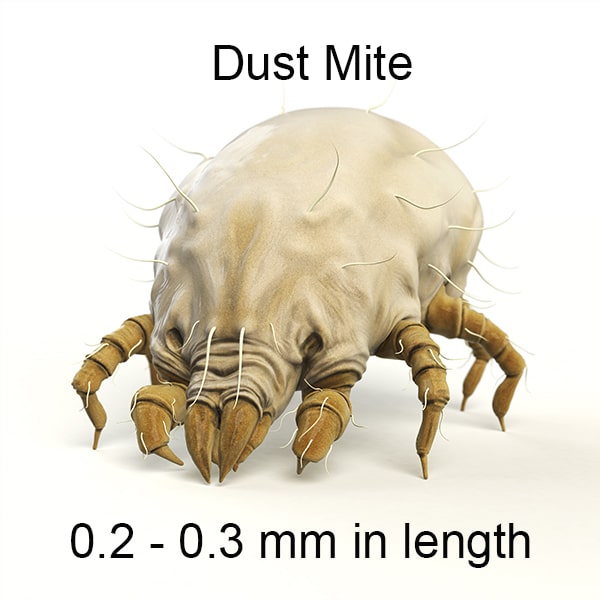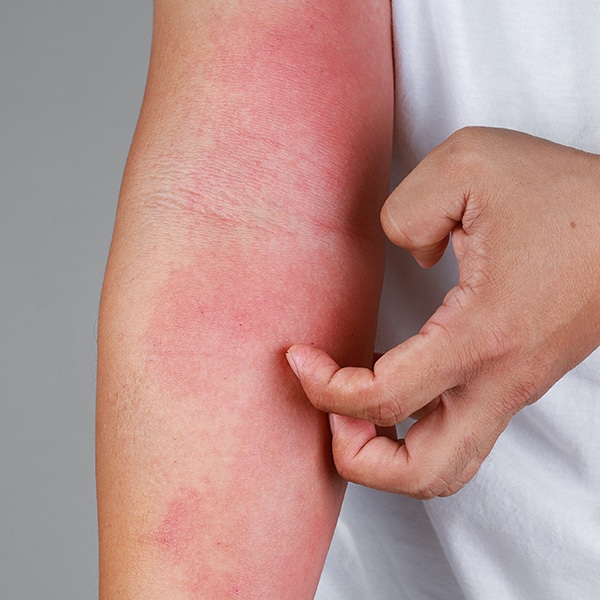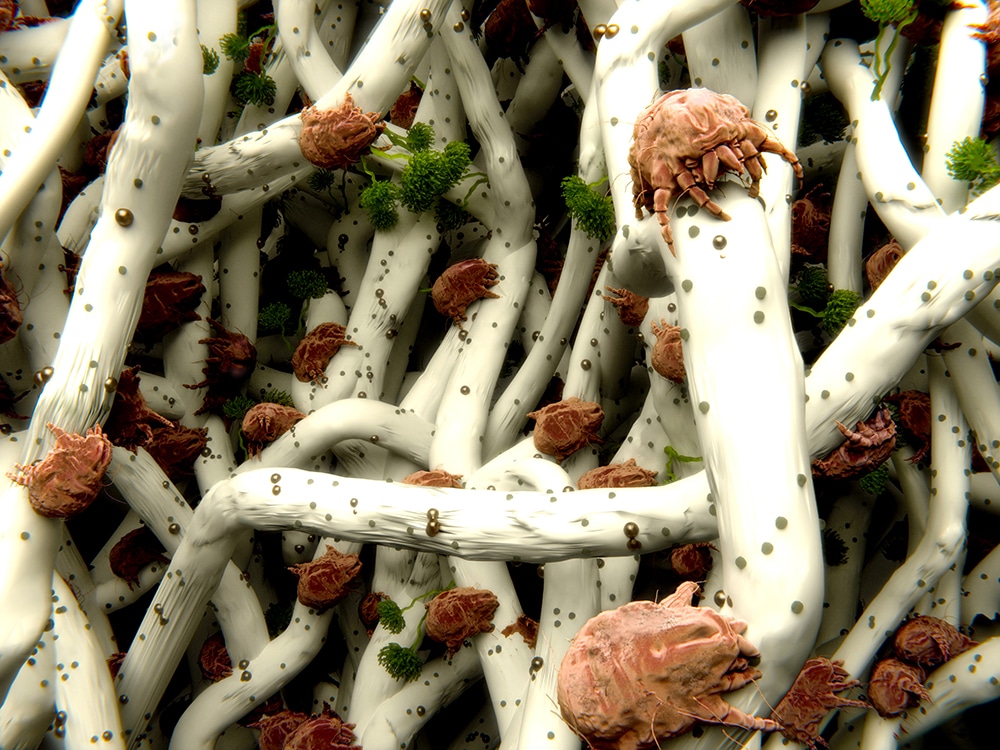
In the article
Last Updated on 02/05/2025 by Tony Abrahams
Dust mites might be tiny, but their impact on your health and home can be massive—especially if you’re one of the millions dealing with allergies, asthma, or eczema. Let’s dive into what they are, where they live, and—most importantly—how to kick them out for good.
What Are Dust Mites?
Dust mites are microscopic creatures that live in your home, especially in warm, humid spots. They feed on dead skin flakes (yep, yours and your pet’s) and can eat up to half their body weight in skin each day.
They’re not parasites—they don’t bite—but they are bad news for allergy sufferers. The problem? Their waste particles and decaying bodies float in the air, get inhaled, and trigger allergic reactions.
You’ll usually find them in:
- Mattresses
- Pillows
- Quilts
- Carpets
- Upholstery
- Curtains

👉 What do dust mites look like?
Where Do Dust Mites Live and How Long Do They Last?
These critters thrive in humid environments where temperatures are cosy (around 20–25°C) and skin cells are plentiful.
- Life expectancy: 2–3 months
- Natural predators: Ants, spiders, moths, beetles
While moths belong to the Lepidoptera family, house dust mites are arthropods, more closely related to ticks and spiders.
What Causes Dust Mite Allergies?
It’s not the mite itself that causes allergies—it’s their poop. When you inhale dried faeces or crushed body parts, your immune system can go into overdrive.
Most people are fine, but some are hypersensitive. According to the American Lung Association, up to 20 million Americans suffer from dust mite allergies.
Common triggers:
- Dusting or vacuuming (stirs up allergens)
- Sleeping in infested bedding
- Using old pillows or upholstered furniture
Symptoms of a Dust Mite Allergy
Symptoms can appear minutes after exposure—or creep in over time.
Respiratory:
- Runny or blocked nose
- Sneezing fits
- Persistent coughing
- Wheezing or shortness of breath
- Asthma attacks
Skin/Eyes:
- Itchy skin or rashes
- Watery, red, or swollen eyes
- Eczema flare-ups
In severe cases, people may feel fatigue, develop difficulty breathing, or even have trouble swallowing. Think it’s just hay fever? It could be mites.

Red itchy skin from dust mite allergy
When to See a Doctor
If you’re experiencing persistent symptoms that don’t clear up with usual allergy meds, it might be time to speak with a GP or allergist.
There’s no permanent cure for a dust mite allergy, but treatment options include:
- Antihistamines
- Decongestants
- Nasal corticosteroids
- Allergen immunotherapy (aka desensitisation)
How to Prevent Dust Mites
Dust mites are stubborn, but you can drastically reduce their numbers with the right habits:
- Wash all bedding weekly in hot water (at least 60°C).
- Use dust-mite-proof encasements on mattresses, duvets, and pillows.
- Vacuum with a HEPA filter to trap fine particles.
- Remove carpets if possible, or steam clean regularly.
- Lower humidity with a dehumidifier (aim for below 50%).
- Keep stuffed toys, curtains, and upholstery clean.
- Seal windows and fix leaks to prevent moisture build-up.
👉 See our mattress covers and allergy solutions
Recommended Dust Mite Products
These aren’t gimmicks—they’re your frontline defence against dust mite allergens. Here’s what we recommend for long-term protection:
Our premium encasement fully seals your mattress, trapping dust mites inside and preventing new ones from entering. Made from breathable, hypoallergenic fabric, it offers silent protection while you sleep. A must-have for anyone with asthma or eczema.
This waterproof, allergen-proof cover protects your doona while still feeling soft and comfortable. It’s machine-washable and completely blocks allergens from passing through the fabric.
Your pillow is one of the dust mites’ favourite hiding spots. These zippered covers form a complete barrier, locking allergens inside and giving you a clean surface to rest your head every night.
For hard-to-wash items like curtains, carpets, and upholstery, the Dust Mite Steamer uses high-heat steam to kill mites instantly. No chemicals, no residues—just pure heat doing the heavy lifting.
Each of these products is safe for homes with children and pets and is backed by our satisfaction guarantee. Together, they create a full-circle defence system to dramatically reduce dust mite exposure.
What’s Lurking in Your Mattress?
Even the cleanest beds aren’t immune. On average, your mattress could be home to 10,000 to 1 million mites. These pests feed, breed, and leave behind waste—right where you sleep.
Want a cleaner bed? Wrap it in a quality dust mite encasement and stop the cycle.

Dust Mites In Sheets
Myth Buster: Do Dust Mites Bite?
Nope. They don’t bite, sting, or burrow. They’re scavengers, not predators. The itchy skin reactions are caused by inhaling or touching their allergens—not a bite.
Suspect You Have a Dust Mite Allergy?
Here’s what to do:
- Track your symptoms: Are they worse in the morning or at night?
- Clean your bedroom thoroughly.
- Encase your mattress and pillows.
- Book an appointment with your doctor or allergist.
Remember: it might not just be dust mites. Mould spores, pet dander, or cigarette smoke can trigger similar reactions.
Freqently Asked Questions:
🧐 1. Can dust mites live in memory foam mattresses?
Yes, absolutely.
Memory foam doesn’t stop dust mites on its own. In fact, because it’s dense and holds heat, it can create the perfect humid environment for dust mites to thrive. The only way to stop them from turning your mattress into a buffet is by encasing it in a dust-mite-proof cover. Without that barrier, you’re basically hosting an invisible sleepover every night.
🧼 2. Does freezing kill dust mites?
Technically, yes—but it’s not practical.
Dust mites can die when exposed to freezing temperatures (below −17°C) for long periods. But unless you’re planning to stick your mattress or couch in a commercial freezer, it’s not a real-world solution. A better bet? Steam cleaning and encasing fabrics to lock them out permanently.
😷 3. Why do my allergies get worse at night?
Because that’s when you’re closest to your enemy.
At night, you’re spending 6–8 hours surrounded by pillows, duvets, and mattresses—aka dust mite paradise. Breathing in allergens while lying still (with your face close to the pillow) leads to stuffy noses, itchy eyes, and restless sleep. Using encasements and air purifiers in the bedroom can make a massive difference.
Final Thoughts
Dust mites may be tiny, but they’re mighty annoying for allergy sufferers. The good news? Now you know how to find them, fight them, and keep them out of your home for good.
Need help choosing the right dust mite protection? Click here to shop trusted, tested covers and cleaners →
“I was waking up sneezing every day until I used your mattress and pillow covers. The difference is night and day!” – Verified Buyer, Sydney
Watch This Video To See How To Protect Your Couch and Dog Bed From Dust Mites
If you have enjoyed our blog, Dust Mites, then you might like to read about smells Dust Mites hate.
Sources



Leave a Reply